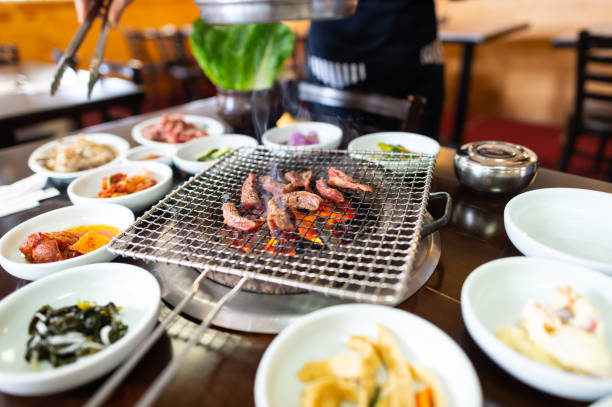Korean BBQ Korean BBQ: Everything You Should Know

Korean barbecue isn't an American-style dish. Apart the fact that you're grilling food most of the components that make up Korean barbecue are distinct. Korean barbecue is distinctive in every way it is made, from the equipment used in the creation of new flavors to the additional accessories you'll find at your table, to the final product. You can certainly fly to Korea to sample it right from the source, if you're inclined However, Korean barbecue restaurants are appearing across the U.S.
The delicious food doesn't require any particular skills. However, there are a few factors that can improve your dining experience. We've collected all you need to know about this dining style so you can enjoy every minute. If you're searching for a unique dinner party theme then you'll need to pick up our tricks for recreating the same experience for yourself. After you've tried best korean bbq Los Angeles, there's no turning back you're going to need to incorporate this diverse menu to your menu rotation.
This isn't an individual trip.
Certain meals can be enjoyed by themselves, but others require companionship. In addition to the social experience, Korean barbecue typically entails some preparation as well as a significant amount of food. You'll want to share the marinades, meats and side dishes with others to enjoy them all.
It's hard for a single person to prepare the meal if you cook it yourself. Meanwhile, as an article from Los Angeleno notes, many Korean barbecue restaurants do not allow solo diners. Though it might seem unfair, the work that goes into setting up and serving each table takes more time than the usual restaurant layout. You can order several items to grill, and portions are designed to fit on tables with multiple guests.
Certain restaurants may allow solo diners, but Korean barbecue joints typically don't. In any event it's better to make the most of your experience if you go with a group, order a wide selection and challenge the boundaries of your appetite. The Korean Guide states that best korean bbq near me is more than simply food. The sharing of it with your friends is a part of the experience.
The final result is affected by the type of heating used and the grill used
One of the most obvious ways in which Korean barbecue is different from the American style is the grill. Grills are typically an appliance that is tabletop in design, rather than a heavy-duty machine with wheels. It's indoors, so make sure you have plenty of airflow. If you're cooking at home, you can also use an outdoor smoker.
Korean barbecue establishments are equipped with good ventilation, however you'll still notice a lingering smell on your clothes when you get at home. The burner on the table is typically integrated into the restaurant's dining area. However, you don’t need to re-design your kitchen to make it work at home.
Each of the three types of power that supply best korean bbq near me food and drink locations are gas, electric or charcoal. Each has its own features. When you use electric or gas grills, you have a lot more control to adjust the heat settings to match the pace of your meal. However there is nothing quite like the flavor of meat cooked on charcoal grills. It requires some experience to reach the ideal temperature. While you could use flat grills in a pinch, Garden Beast explains that a classic dome-shaped design helps excess oil drain off to prevent it from spitting.
The main draw is the meat
Sure, you can order seafood at some Korean barbecue establishments. However, mushrooms and potatoes as well as other vegetables are also grill-friendly but meat is the real star of the event. You can sample a wide range of meat cuts and the variety of sauces and marinades that can be used to add flavor to your plate.
Bulgogi is among the most well-known dishes consisting of thinly cut pieces of beef. You may be served sirloin, prime rib, or brisket, and the flavorful marinade makes each bite unique and leaves you wanting the next (which is great since there are many Korean barbecue restaurants have an all-you-can-eat menu). A tender and delicious cut of beef pairs beautifully with sauces or salads, while other choices like kalbi (beef short rib) can be enjoyed with noodles or rice.
Matador Network describes more options for those who love red meat such as jumulleok (short steak) and Kalbisal (thinly cut ribs) or non-marinated options like Chimasal (flank steak), the chadolbaegi (thinly cut brisket) and deungsim (sirloin) as well as the hyuh mitgui (beef tongue)! Rich pork belly is an everyday staple in Korean barbecue. Chops, skirt meat, and jowls are also pork favorites. The other meats and chickens are usually served, but pork and beef are among the most popular choices.